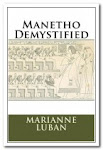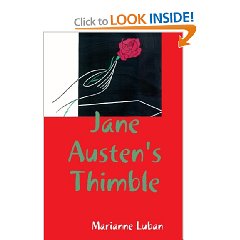As an artist Winifred Brunton was a fine technician and was capable of some excellent portraiture--not necessarily of ancient Egyptians. She did a very good job with headdresses, costume and jewelry, but could not quite bring herself to imagine all the Egyptian royals as looking oriental. In fact, some of them appear decidedly British. Regardless, Brunton's portraits are interesting to behold:
http://www.touregypt.net/featurestories/winiferbrunton.htm
The best painting is of Seti I. Since this king's mummified face is so remarkably preserved one could work well with it except that, again, Brunton imagined him more as an English gentleman with refined features instead of the eastern despot that he probably was. Seti's lips are too thin but at least his eyes are not exactly European. While this is a wonderful little painting of a pharaoh in his finery, I think perhaps the actual Seti I would have wished to have been that handsome with such lean cheeks! I believe the king was handsome, but in a different way. Compare my view with Brunton's below. Oddly, when it came to portraying Queen Nefertiti, Winifred executed a woman who does not even remind one of the Egyptian beauty and, were it not for her unique crown, one could not recognize who she was supposed to be. In fact, unlike the famous Berlin bust, which is an icon of haunting loveliness of a rare type, Brunton's Nefertiti, ironically, is merely pleasant and even demure. She is singularly lacking in beauty and even appears toothless! What the ancient sculptor captured, Winifred could not even approximate. And, for some unknown reason, she made Nefertiti's husband, Akhenaten, look like a girl. Are the portraits of Winifred Brunton failures? In my opinion, it is about half yes and half no. You decide for yourself.
Sunday, February 26, 2012
Monday, February 6, 2012
The Message of the Restoration Stela

When a boy of around nine became king of Egypt in his own right, whoever was the power behind the throne decided to erect a stela in the Great Hypostyle Hall in front of the Third Pylon of the Temple of Amun at Karnak. This bit of propaganda was to let the prophets, priests, and whoever else could read the writing on the slab know that, if the harvest failed or the land did not otherwise prosper, it was not the fault of the present administration. Because it had disassociated itself with any recent reigns that might have gone before. Nobody was mentioned by name but all the rulers who had not been true devotees of the god, Amun, were denounced in two curt phrases. "Their hearts were weak in their bodies. They destroyed what had been built."
True, the new king, Nebkheperure Tutankhamun, was the son of one of them, had to be--but, on the Restoration Stela, he has no father save Amun although, of course, Son of the Sun was part of the titulary formula. Much of the text deals with the displeasure of the gods at the havoc the previous, anonymous, pharaohs had wrought. No wonder, as their temples had become abandoned, their halls footpaths. No offerings were made and so, the deities had turned their backs on Egypt and nothing good came of anything. I do not think it is just an accident that the stela is dated Year 1, 4th month of the season of Akhet [Khoiak] Day 19. In 1331 BCE, a reasonable date for the "restoration of the old order", this amounted to the 7th of November. By this time the Nile flood had receded and it was the time of sowing. Since the stela mentioned some things Tutankhamun had already fashioned for the gods, new and better statues, shrines, new servitors for their temples, they should now be propitiated. He had spared no expense. If the height of the flood hadn't quite been up to expectation, if the harvest should be less than abundant--well, this king was not to blame. He had done all he could to curry favor with the old gods--or at least that was what the Thebans were given to know. The ruler was not to be seen. He was in the Northland, at Memphis, living in the palace of his illustrious forebear, Thutmose I. No harm in mentioning the name of that king. It might lend the impression that Tutankhamun had it in mind to emulate that great conqueror, whose heart had certainly not been weak in his body. The stela admits the sovereign is young but he is a paragon in every way. He is knowledgeable like Ra, ingenious like Ptah, and as perceptive as Thoth. Never mind that he is only nine years old and the victim of incest in some ways best not to mention. He is working in the best interests of the nation and the rest is up to the gods, themselves. Evidently, a successor of Tutankhamun, Horemheb, found the Restoration Stela expressed his opinion of all those rulers who had come before *him*, Tutankhamun included. And so he usurped that slab as soon as he was able.
Subscribe to:
Posts (Atom)










